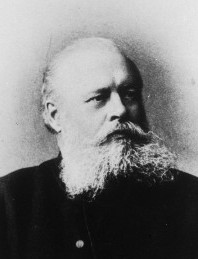20.1(2) Electrophilic addition
.png)
 Learning outcomes
Learning outcomes
.png) After studying this sub-topic you should be able to:
After studying this sub-topic you should be able to:
Understand:
- Electrophiles are electron-deficient species that can accept a pair of electrons from a nucleophile. All electrophiles are Lewis acids.
- The major product in electrophilic addition reactions involving asymmetrical alkenes with hydrogen halides and interhalogens can be predicted using Markovnikov’s rule.
- The formation of the major product can be explained by the relative stability of the possible intermediate carbocations in the reaction mechanism.
Apply your knowledge to:
- Deduce the mechanism of the electrophilic addition reactions of alkenes with hydrogen halides and with halogens and or interhalogens.
Relationships & vocabulary
Nature of science
Organic reactions fall into a number of different categories. By understanding different types of organic reactions and their mechanisms, it is possible to synthesize new compounds with novel properties for use in diverse applications.
Collaboration between scientists on investigating the synthesis of organic compounds using new green chemistry pathways involves ethical and environmental implications.
International-mindedness
How important in the global context is organic chemistry to green and sustainable chemistry?
For more examples and links to International mindedness, Theory of knowledge, utilization etc. see separate page which covers all of Topics 10 & 20 : Organic chemistry.
Vocabulary
| Markovnikov's rule | carbocation | electrophile | induced dipole |
| electrophilic addition | asymmetric | interhalogen |
Learning slides
You can use this slide gallery for learning or for reviewing concepts and information. It covers all the key points in the syllabus for this sub-topic.
Something to think about
 How many chemists from the former Soviet era are known in the West?
How many chemists from the former Soviet era are known in the West?
Vladimir Markovnikov (1838-1904) was a Russian chemist who in 1869, on the basis of little evidence, formulated the rule that when hydrogen halides add to alkenes the hydrogen atom bonds to the carbon atom that already contains the most hydrogen atoms. This is useful for predicting the product but it is not an explanation.
The explanation in terms of the stability of the intermediate carbocation was put forward by Morris Kharasch (1895-1957) in 1933. Morris Kharasch was in fact born in Ukraine in the former Soviet Union but when he was 13 he emigrated to the US and studied at the University of Chicago.
Apart from Mendeleyev, Markovnikov is probably the only other Russian chemist whose name is generally known by western scientists although he worked as a postgraduate student under Alexander Mikhaĭlovich Butlerov (1828-1886) at Kazan University. (For a possible explanation as to why Soviet scientists have been 'airbrushed' out of Western science see my blog on How international is IB Chemistry?)
Test your understanding of this topic
(Note that your teacher may have restricted your access to some or all of these questions and worked answers if they are going to use them as a class test or set them as an assignment.)
For ten 'quiz' multiple choice questions with the answers explained see MC test: Electrophilic addition & substitution reactions. Note that this quiz also includes questions on electrophilic substitution as both form part of Topic 20.1.
For short-answer questions see Electrophilic addition questions.
More resources
1. A good description of the straightforward addition of hydrogen bromide to ethene explaining why the mechanism occurs in the way that it does. The video is by James Mungall.
Mechanism of electrophilic addition ![]()
2. In this second video James Mungall explain the mechanism of Markovnikov addition.
3. If you prefer music and a bit of polar bear 'humour' another video on three straightforward electrophilic addition reactions might appeal to you.
Electrophilic addition reactions ![]()
4. From a TOK point of view it is interesting to look at how Morris Kharash came up with his carbocation explanation. Since Markovnikov formulated his rule there was considerable discrepancy in the literature about the products formed. Many people reported that they obtained the other isomer as the major product. Kharash showed that if the alkene was not purified beforehand it contains traces of peroxides. These formed free-radicals and the radical mechanism resulted in the formation of the anti-Markovnikov addition product. If only pure freshly distilled alkenes are used then the ionic mechanism prevails and the addition occurs as predicted by Markovnikov. (See my blog on Fish oil.)

 IB Docs (2) Team
IB Docs (2) Team 












